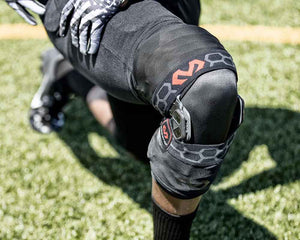Did you tear a meniscus recently? You are not alone. Meniscus tears are a very common injury in sports. The states that there are over 200,000 cases of a torn meniscus each year in the United States. Your meniscus is a rubbery cartilage situated between your shin bone and your thigh bone which acts like a cushion. The meniscus can tear with forceful twisting or rotation of the knee, movements that are common to sports. A torn meniscus will cause pain, swelling and may prevent you from fully extending your knee.
Fortunately, in most cases, the injury can heal within months. Surgery is rarely required–only in the most severe cases. Aside from surgery, less invasive treatments can help as well, including rest, ice, pain relievers and physical therapy. After a meniscus tear, you're also going to want to start researching quality knee braces. Knee braces may help you to recover from a torn meniscus injury and prevent aggravating an existing condition. Let's delve into how a knee brace can help you recover from a torn meniscus.
Providing Stability
Our joints and muscles are all connected. An injury in one area can lead to issues in other nearby muscles or joints. A meniscus tear can cause instability, which needs to be corrected as soon as possible. An unstable joint can lead to damage in other joints, as other muscles will overcompensate to pick up the slack by the affected area.
Wearing a rehabilitative knee brace will help the user recover from a torn meniscus by providing stability to the joint and preventing the wearer from aggravating the injury even further. Knee braces with hinges on either side of the knee offer protection and prevent that wobbly feeling you may get after a knee injury.
Preventing Hyperextension
A knee brace will prevent the user from extending the knee beyond their normal range of motion. One of the most common causes of a torn meniscus is hyperextension at the knee.
Increased Confidence
A meniscal tear is often rehabilitated with physical therapy. After a person suffers an injury to the knee, they may feel intimidated at the thought of bearing weight or performing exercises on it. Wearing a knee brace can help increase their confidence and give them the push they need to execute their therapy program and get back on the road to recovery.
Pain Relief
A well-constructed knee brace will have an unloading effect on the wearer's knee. The brace reduces the direct pressure from your upper leg on your meniscus, which results in pain relief. When you have less pain, it is more likely that you will be more active and stick to your physical therapy program.
Increased Circulation
Knee braces add pressure to the affected area, which encourages greater circulation. Blood flow to the area brings oxygen and fresh nutrients which speed recovery. Research shows that about 30% of the meniscus (the outer portion) has its own blood supply.
The rest of the meniscus receives its nutrition from the synovial fluid in your joint capsule. The nutrients in the synovial fluid diffuse to the meniscus through movement. Keep in mind one of the main benefits of knee braces is that they help you stay active, which is a major part of recovery.
After tearing your meniscus, you will have to rest for the first few days following the injury. Once the majority of the swelling goes down, the focus will be on regaining the strength in your affected thigh. Quadriceps strength is important here because it controls extension of the knee. When you start your physical therapy program, your muscles will become sore. Wearing a knee brace will help you reduce the soreness and recover more quickly due to the increase in circulation. Faster recovery will lead to greater progress throughout your program, as your muscles will adapt more quickly to the demands you place upon it.
Potentially Avoiding Surgery
Please keep in mind that if you have any symptoms of a meniscus tear but you are not completely sure that's the case, check with your doctor for the proper diagnosis. A conservative physician will opt out of surgery and attempt to have you rehabilitate your knee by wearing a knee brace and partaking in a physical therapy program. The right knee brace can help you avoid surgery and potentially thousands of dollars in medical bills.






Jeanie
November 02, 2020
Had minicus surgery 10 yrs ago. Worked great all that time. Went for a swim and that night all hell broke loose. Sheer agonizing pain all the way up to my spine. Waiting to hear what my MRI says. Wearing a brace all day. Numb from my kneecap down.